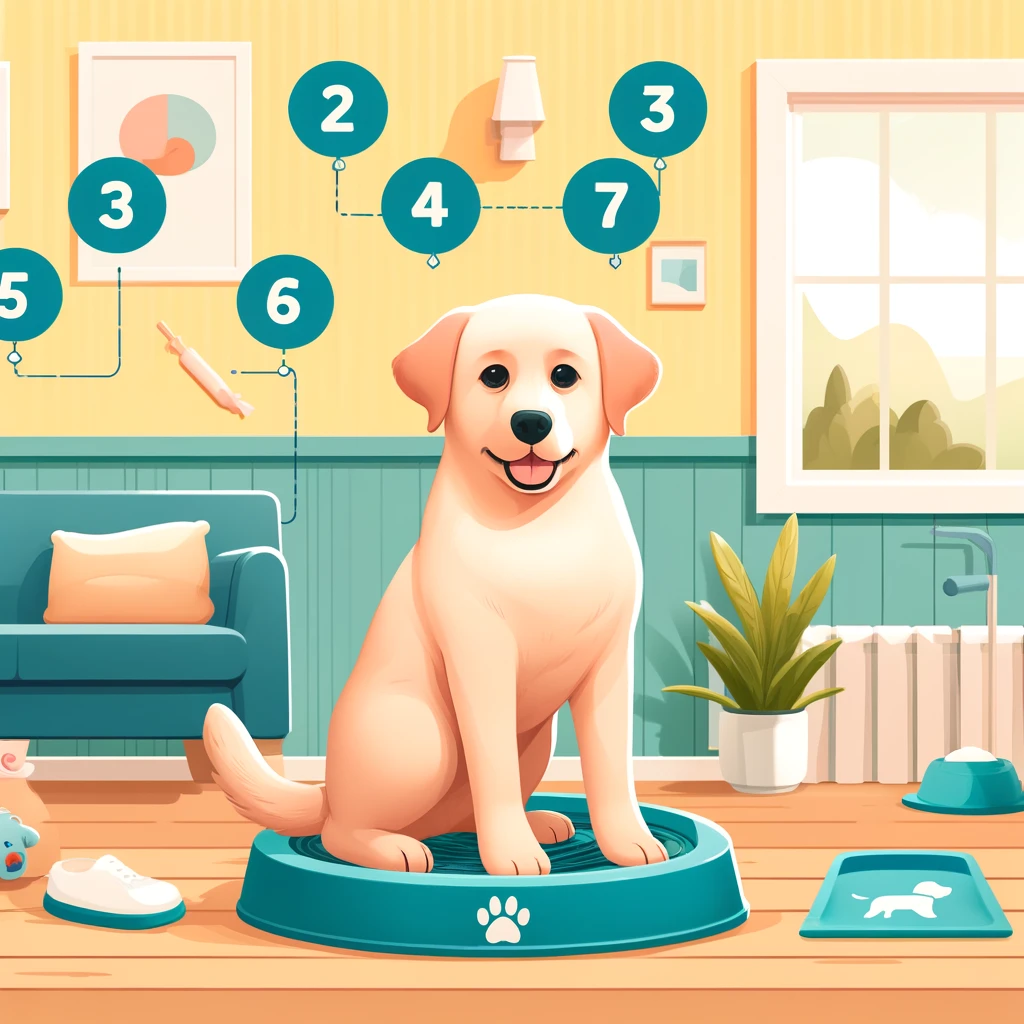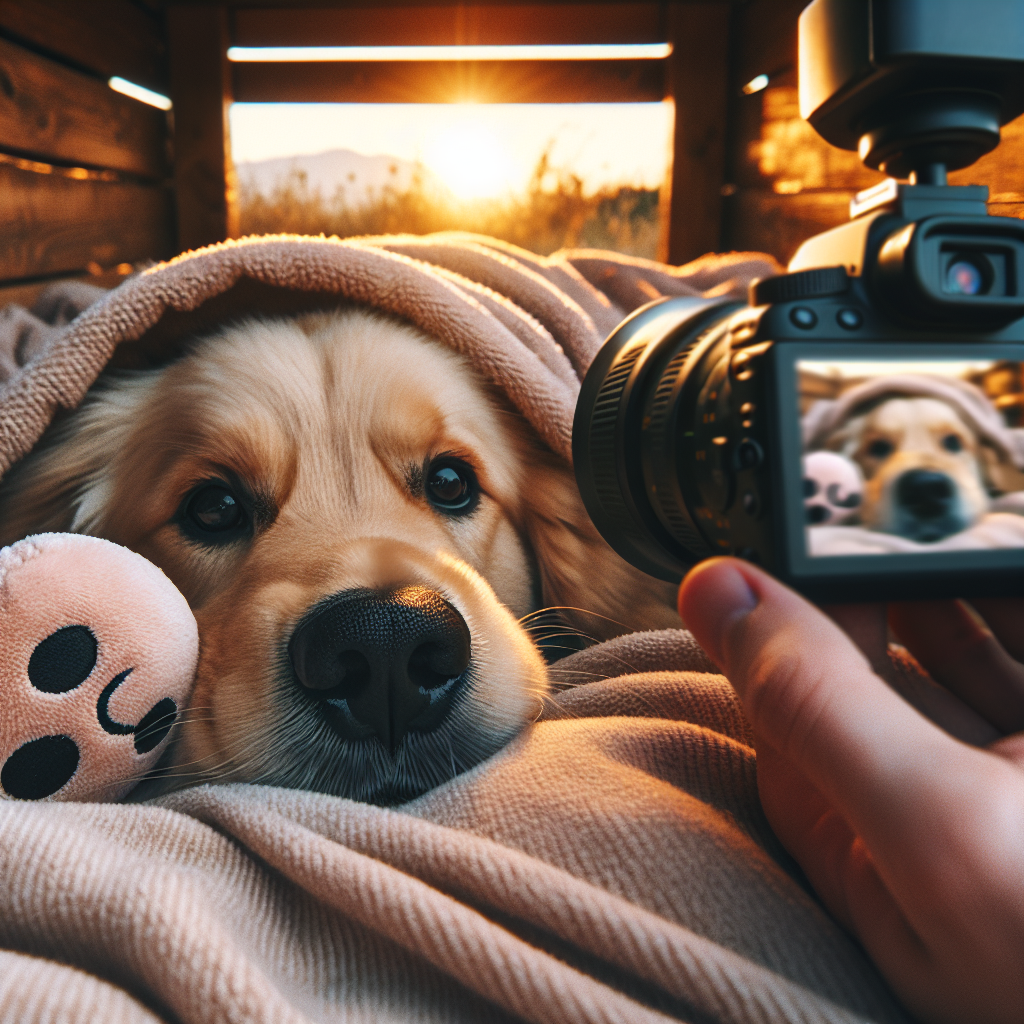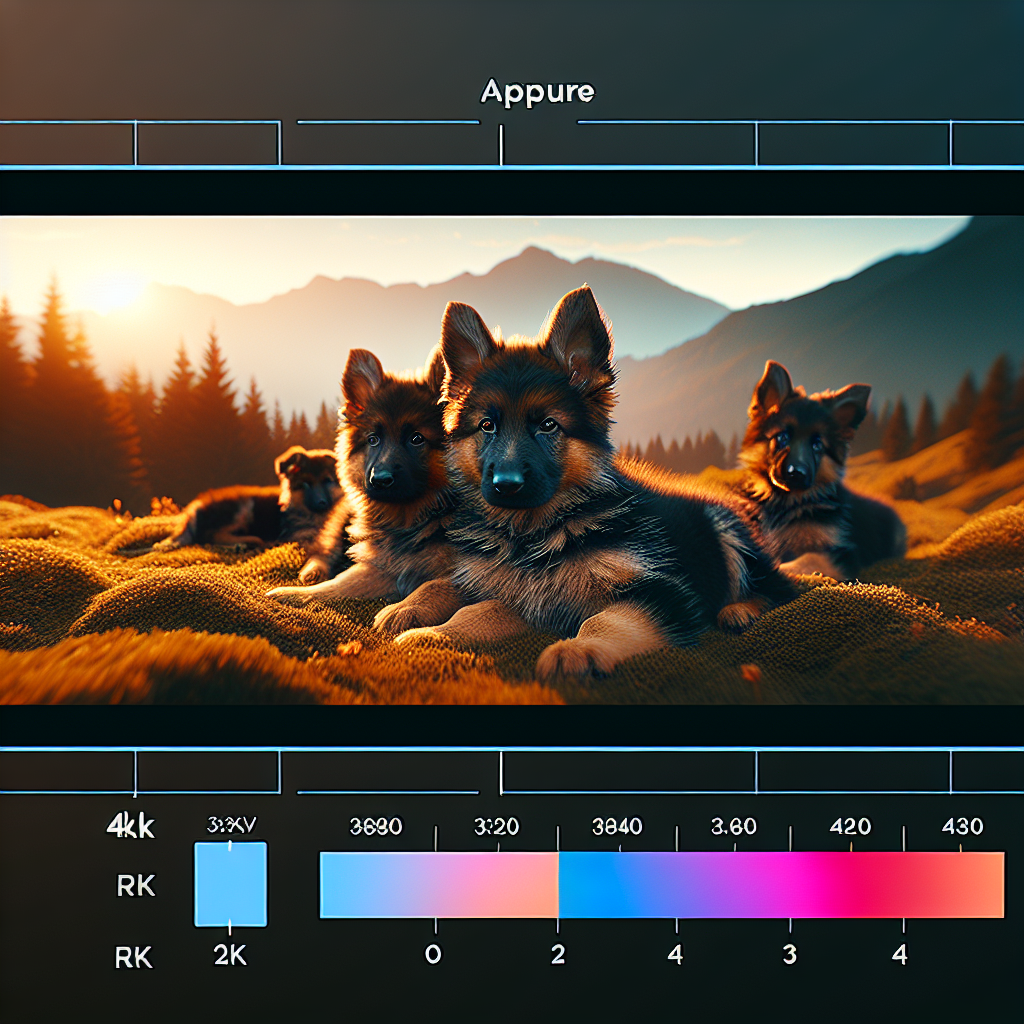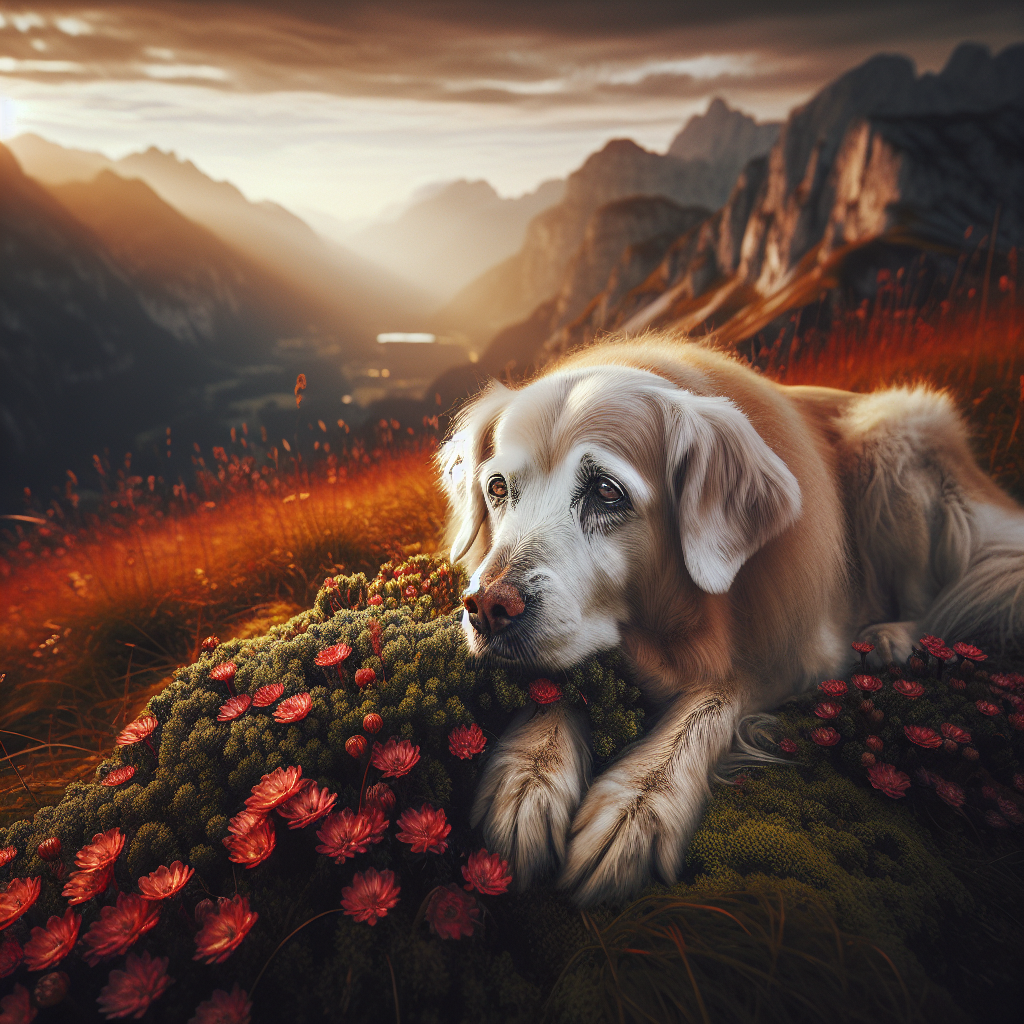How to Potty Train Your Dog: A Step-by-Step Guide
How to Potty Train Your Dog_ A Step-by-Step Guide

-
Table of Contents
Introduction
Potty training is an essential part of owning a dog, ensuring they understand where and when it is appropriate to relieve themselves. By following a step-by-step guide, you can effectively potty train your dog and establish good habits early on. This guide will provide you with the necessary information and techniques to successfully potty train your dog, helping you create a clean and comfortable environment for both you and your furry friend.
The Importance of Potty Training for Dogs
Potty training is an essential part of owning a dog. Not only does it make your life easier, but it also ensures that your furry friend is well-behaved and hygienic. In this step-by-step guide, we will explore the importance of potty training for dogs and provide you with some valuable tips to make the process as smooth as possible.
First and foremost, potty training is crucial for maintaining a clean and odor-free home. No one wants to constantly clean up after their dog’s accidents or live in a house that smells like a pet store. By teaching your dog where and when to do their business, you can avoid these unpleasant situations and create a more pleasant living environment for both you and your pet.
Additionally, potty training helps establish a routine for your dog. Dogs thrive on structure and consistency, and having a set schedule for bathroom breaks can help them feel more secure and confident. When your dog knows when and where they are supposed to go, they will be less likely to have accidents or become anxious about finding an appropriate spot.
Potty training also plays a significant role in preventing behavioural issues. Dogs that are not properly trained may develop bad habits such as marking territory inside the house or chewing on furniture. By teaching your dog to eliminate outside, you are setting clear boundaries and reinforcing positive behaviour. This can greatly reduce the likelihood of destructive habits and make your dog a more well-behaved member of the family.
Now that we understand the importance of potty training, let’s dive into the step-by-step process. The first step is to establish a designated potty area for your dog. This can be a specific spot in your yard or a designated area on your balcony if you live in an apartment. Make sure this area is easily accessible and consistently use it for bathroom breaks.
Next, establish a regular feeding schedule for your dog. By feeding your dog at the same times each day, you can predict when they will need to go outside. This will help you anticipate their bathroom needs and prevent accidents.
When it’s time for a bathroom break, take your dog to the designated potty area and use a specific command, such as “go potty” or “do your business.” Be patient and give your dog plenty of time to sniff around and find the perfect spot. Once they eliminate, praise them enthusiastically and offer a small treat as a reward. Positive reinforcement is key to reinforcing the desired behaviour.
Consistency is crucial throughout the potty training process. Take your dog outside frequently, especially after meals, naps, and playtime. Keep a close eye on them indoors and watch for signs that they need to go, such as sniffing or circling. If you catch your dog in the act of having an accident, calmly interrupt them and immediately take them outside to finish.
Accidents are bound to happen during the potty training process, so it’s important to remain patient and avoid punishment. Never scold or yell at your dog for having an accident, as this will only create fear and confusion. Instead, clean up the mess thoroughly and continue with the training process.
In conclusion, potty training is a vital aspect of dog ownership. It promotes cleanliness, establishes routines, and prevents behavioural issues. By following these step-by-step guidelines and maintaining consistency, you can successfully potty train your dog and enjoy a harmonious living environment with your furry companion.
Understanding Your Dog’s Bathroom Habits
Understanding Your Dog’s Bathroom Habits
Potty training your dog can be a challenging task, but with the right knowledge and approach, it can be a smooth and successful process. Before diving into the step-by-step guide, it’s important to understand your dog’s bathroom habits. By doing so, you’ll be better equipped to anticipate their needs and set them up for success.
Dogs have a natural instinct to keep their living space clean, which is why they tend to avoid soiling their immediate surroundings. This instinct is a valuable tool when it comes to potty training. By understanding this behaviour, you can use it to your advantage.
One important aspect of understanding your dog’s bathroom habits is recognizing their need to eliminate. Dogs typically need to relieve themselves after waking up, eating, drinking, playing, or exercising. Additionally, puppies have smaller bladders and shorter control over their bodily functions, so they may need to go more frequently.
Observing your dog’s behaviour can provide valuable clues about their need to eliminate. They may start sniffing the ground, circling, or pacing restlessly. Some dogs may even whine or scratch at the door. By paying attention to these signs, you can quickly identify when your dog needs to go outside.
Establishing a routine is another crucial aspect of understanding your dog’s bathroom habits. Dogs thrive on consistency, so having a set schedule for potty breaks can help them develop good habits. Take your dog outside to the same spot each time, as the scent will help them associate that area with elimination.
When your dog successfully eliminates outside, be sure to praise and reward them. Positive reinforcement is a powerful tool in potty training. You can use treats, verbal praise, or a combination of both. This positive association will motivate your dog to repeat the behaviour in the future.
On the other hand, accidents are bound to happen during the potty training process. It’s important not to scold or punish your dog for accidents. Instead, clean up the mess without making a fuss. Dogs do not understand punishment after the fact, so it will only confuse them and hinder their progress.
Understanding your dog’s bathroom habits also involves recognizing the signs of a potential health issue. If your dog suddenly starts having accidents indoors or shows other unusual behaviours, it may be a sign of an underlying medical condition. In such cases, it’s best to consult with a veterinarian to rule out any health problems.
Lastly, it’s important to be patient and consistent throughout the potty training process. Dogs learn at their own pace, and setbacks are normal. Stay positive and keep reinforcing good behaviour. With time and effort, your dog will learn to understand and follow your expectations.
In conclusion, understanding your dog’s bathroom habits is a crucial step in potty training. By recognizing their need to eliminate, establishing a routine, and using positive reinforcement, you can set your dog up for success. Remember to be patient, consistent, and understanding throughout the process. With these insights, you’ll be well-prepared to embark on the step-by-step guide to potty training your dog.
Creating a Consistent Potty Training Schedule
Potty training a dog can be a challenging task, but with a step-by-step guide, you can make the process much easier. One of the most important aspects of potty training is creating a consistent schedule. Dogs thrive on routine, and having a set schedule will help them understand when and where they should go potty.
The first step in creating a consistent potty training schedule is to determine how often your dog needs to go outside. Puppies generally have smaller bladders and will need to go out more frequently than adult dogs. On average, puppies should be taken outside every 1-2 hours, while adult dogs can typically hold it for 4-6 hours. However, every dog is different, so it’s important to pay attention to your dog’s individual needs.
Once you have an idea of how often your dog needs to go outside, you can start to create a schedule. It’s best to take your dog out at the same times every day, as this will help them develop a routine. For example, you might take your dog out first thing in the morning, after meals, before bedtime, and at regular intervals throughout the day.
When taking your dog outside, it’s important to choose a designated potty area. This could be a specific spot in your yard or a nearby park. By consistently taking your dog to the same spot, they will begin to associate that area with going potty. This will make it easier for them to understand where they should go when they need to relieve themselves.
When you take your dog outside, be sure to give them plenty of time to do their business. Some dogs may go right away, while others may take a bit longer. Be patient and give them the opportunity to fully empty their bladder and bowels. You can use a command, such as “go potty,” to help them understand what you want them to do.
If your dog doesn’t go potty after a few minutes, bring them back inside and try again in 10-15 minutes. It’s important not to scold or punish your dog if they don’t go outside. This can create anxiety and make the potty training process more difficult. Instead, simply bring them back inside and try again later.
Consistency is key when it comes to potty training. Stick to your schedule and be diligent about taking your dog outside at the designated times. If accidents happen inside the house, clean them up without making a fuss. Punishing your dog after the fact will only confuse them and make it harder for them to understand what you want.
In addition to creating a consistent schedule, it’s important to reward your dog for going potty outside. Positive reinforcement is a powerful tool in training, and dogs respond well to praise and treats. Whenever your dog successfully goes potty outside, be sure to give them lots of praise and a small treat. This will help reinforce the behaviour and encourage them to continue going outside.
Creating a consistent potty training schedule is an essential step in successfully potty training your dog. By determining how often your dog needs to go outside, establishing a routine, and using positive reinforcement, you can set your dog up for success. Remember to be patient and consistent, and soon your dog will be fully potty trained.
Positive Reinforcement Techniques for Potty Training
Potty training your dog can be a challenging task, but with the right techniques and a positive mindset, it can also be a rewarding experience. One of the most effective methods for potty training is using positive reinforcement techniques. In this section, we will guide you through the step-by-step process of potty training your dog using positive reinforcement.
First and foremost, it’s important to understand that positive reinforcement involves rewarding your dog for good behaviour rather than punishing them for accidents. This approach creates a positive association with the desired behaviour and encourages your dog to repeat it. So, let’s dive into the steps of potty training using positive reinforcement.
Step 1: Establish a Routine
Creating a consistent routine is crucial for successful potty training. Take your dog outside to the designated potty area at regular intervals throughout the day, such as after meals, naps, and playtime. By doing this, you are teaching your dog when and where they should go potty.
Step 2: Choose a Reward
Decide on a reward that your dog finds motivating. It could be a small treat, a favourite toy, or even verbal praise. The key is to make the reward something your dog truly values, as this will increase their motivation to perform the desired behaviour.
Step 3: Observe and Anticipate
Keep a close eye on your dog’s behaviour and body language. Look for signs that they need to go potty, such as sniffing the ground or circling. When you notice these signs, quickly take them to the designated potty area. Anticipating their needs will help prevent accidents and reinforce the desired behaviour.
Step 4: Use a Cue Word
Choose a cue word or phrase that you will consistently use when it’s time for your dog to go potty. It could be something simple like “go potty” or “do your business.” By using the same cue word each time, your dog will begin to associate it with the act of going potty.
Step 5: Reward and Reinforce
When your dog successfully goes potty in the designated area, immediately praise them and offer the chosen reward. Be enthusiastic and use a happy tone of voice to show your dog that they have done something right. This positive reinforcement will strengthen the connection between the cue word, the desired behaviour, and the reward.
Step 6: Be Patient and Consistent
Potty training takes time and patience. Accidents will happen, especially in the beginning. It’s important to remain calm and avoid scolding or punishing your dog for accidents. Instead, focus on reinforcing the desired behaviour and redirecting them to the designated potty area.
Step 7: Gradually Extend Time Between Potty Breaks
As your dog becomes more reliable in going potty in the designated area, gradually increase the time between potty breaks. This will help them develop bladder control and learn to hold it for longer periods. However, be mindful not to extend the time too quickly, as it may lead to accidents.
Remember, positive reinforcement is all about creating a positive and enjoyable experience for your dog. By following these steps and using positive reinforcement techniques, you can effectively potty train your dog while strengthening your bond with them. So, be patient, consistent, and always celebrate your dog’s successes along the way. Happy potty training!
Troubleshooting Common Potty Training Challenges
Potty training your dog can be a challenging process, but with patience and consistency, you can successfully teach your furry friend to do their business outside. However, even with the best intentions, you may encounter some common challenges along the way. In this section, we will discuss these challenges and provide some troubleshooting tips to help you overcome them.
One common challenge in potty training is accidents inside the house. It’s important to remember that accidents are a normal part of the learning process, especially in the early stages. If your dog has an accident, it’s crucial not to scold or punish them. Instead, calmly clean up the mess and take your dog outside to their designated potty area. This will help them associate going potty with being outside.
Another challenge you may face is your dog not signalling when they need to go outside. Some dogs may naturally scratch at the door or bark to let you know they need to go out, while others may not have developed this behaviour yet. To encourage your dog to signal, you can try using a bell or a specific sound cue every time you take them outside to potty. Eventually, they will associate the sound with going outside and may start using it to communicate their needs.
If your dog consistently goes potty in the house, it could be a sign that they are not fully understanding the concept of potty training. In this case, it may be helpful to go back to the basics and reinforce the training process. Take your dog outside more frequently, especially after meals or naps, and reward them with praise and treats when they go potty outside. Consistency is key, so make sure to establish a routine and stick to it.
Some dogs may also have difficulty holding their bladder for long periods, especially puppies or small breeds. If this is the case, you may need to adjust your potty training schedule and take your dog outside more frequently. Gradually increase the time between potty breaks as your dog becomes more comfortable and reliable. Additionally, make sure your dog has access to fresh water throughout the day, but monitor their intake to avoid excessive drinking.
Another challenge you may encounter is your dog being afraid or hesitant to go potty outside. This could be due to various reasons, such as loud noises or unfamiliar surroundings. To help your dog overcome their fear, create a calm and safe environment in their designated potty area. You can also try using positive reinforcement, such as treats or praise, to reward them for going potty outside. If the fear persists, consult with a professional dog trainer or behaviourist for further guidance.
Lastly, some dogs may develop a preference for certain surfaces, such as carpet or grass, making it difficult to transition them to a different potty area. If your dog consistently goes potty on a specific surface, try gradually introducing them to the desired surface by placing it in their current potty area. For example, if you want your dog to go on grass but they prefer carpet, start by placing a small patch of grass in their usual potty spot. Over time, you can gradually increase the size of the grass patch until your dog is comfortable going potty on it.
Potty training your dog can be a challenging journey, but with patience, consistency, and troubleshooting strategies, you can overcome common challenges and successfully teach your dog to go potty outside. Remember to remain positive and reward your dog for their progress, and soon enough, you’ll have a well-trained and housebroken companion.
Conclusion
In conclusion, potty training your dog requires consistency, patience, and positive reinforcement. Following a step-by-step guide can help you establish a routine, teach your dog where to eliminate, and prevent accidents in the house. Remember to reward your dog for successful potty breaks and avoid punishment for accidents. With time and effort, your dog can become fully potty trained.





